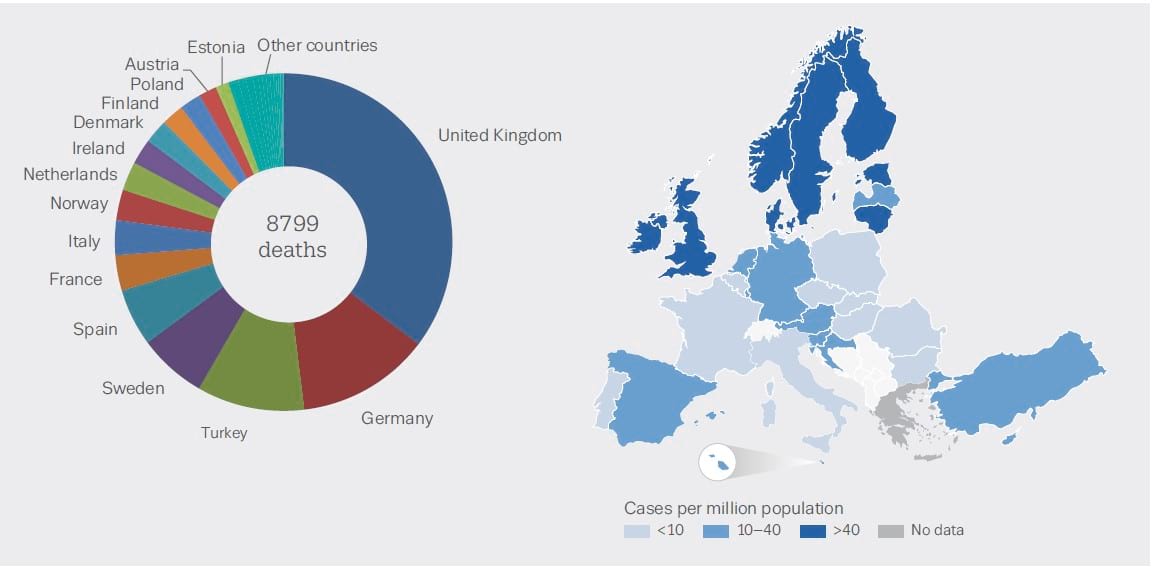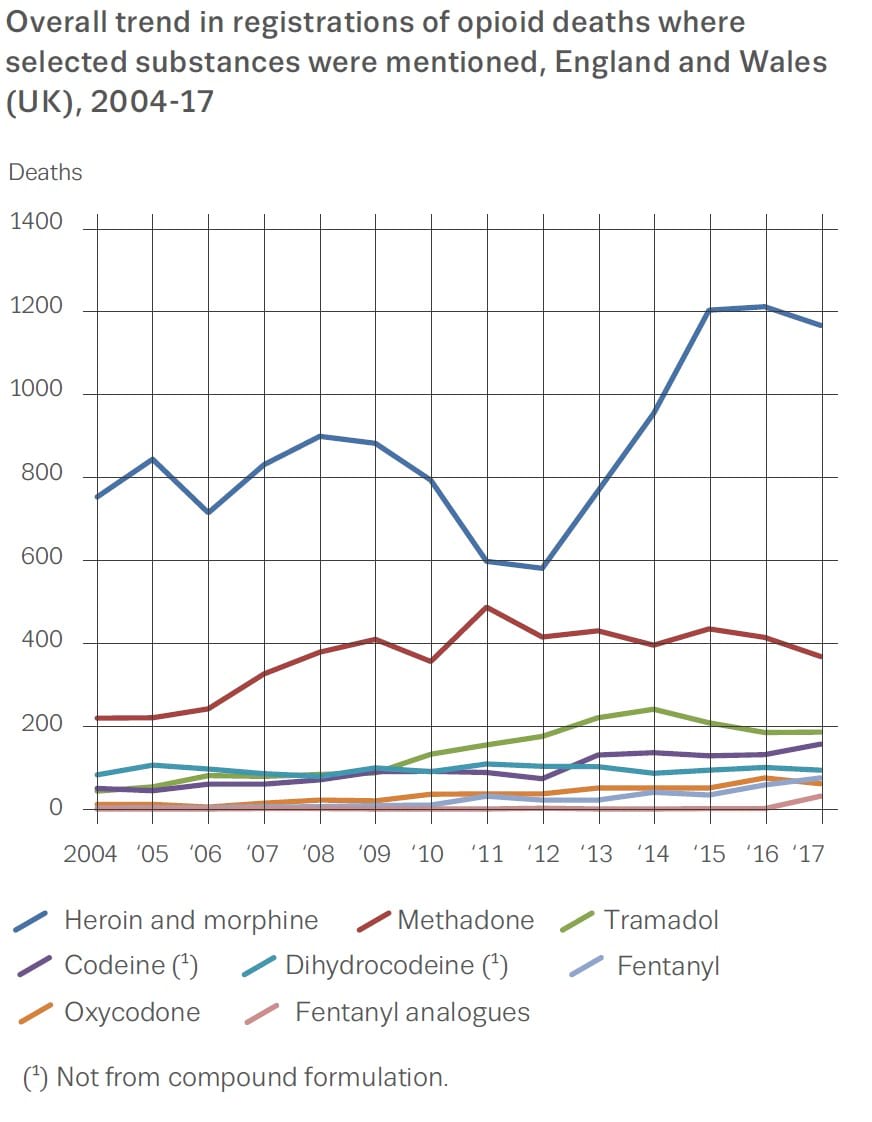Earlier this week (30 July 2019), the Euopean Monitoring Centre for Drugs and Drug Addiction published its latest update on Drug-related deaths and mortality in Europe. The information provided in the report is collected through the EMCDDA’s expert network on drug-related deaths (DRD). The updates presented shed light on important public health challenges faced by European policymakers and stakeholders, with regard to monitoring, prevention, risk assessment, harm reduction and drug treatment. Below are some of the findings ‘At a glance’.
Overdose deaths: a very high burden of premature preventable deaths
- Over 8 200 deaths involving one or more illicit drugs were reported in 2017 in the European Union. This estimate exceeds 9 400 deaths when Norway and Turkey are included.
- Males account for four-fifths of the drug-induced deaths.
- Most of the deaths were premature, affecting people in their thirties and forties.
Opioids: the main driver of fatal overdoses in Europe
- Opioids, often heroin, are involved in between eight and nine out of every 10 drug-induced deaths reported in Europe, although this is not true for all countries.
- Opioids used in substitution treatment are also commonly found in post-mortem analysis in some countries.
- Deaths related to medications, such as oxycodone and tramadol, are also reported.
- Deaths associated with fentanyl, its analogues are probably underestimated, and outbreaks of deaths related to these substances have been reported.
Stimulants and benzodiazepines involved in many deaths
- Post-mortem toxicology analyses of overdose cases suggest that in most cases, multiple drug toxicity is implicated.
- Overall, cocaine is reported in an increasing number of deaths. Increased cocaine injection is also reported in several countries.
- Synthetic cannabinoids were involved in the majority of drug-induced deaths reported in Turkey in 2017.
- Fake medicines, diverted medicines and new benzodiazepines are related to an increasing proportion of drug-related deaths in some countries. Benzodiazepines are causing particular concern in Scotland (UK), where they were implicated in more than half of the reported drug-related deaths in 2017, with recent increases driven mainly by deaths involving new benzodiazepines, such as etizolam.
High overall mortality among drug users
- Seven countries reported new data from mortality cohort studies among high-risk drug users.
- Findings suggest that high-risk drug users are three to seven times more likely to die than their peers of the same age and gender in the general population.
- The most frequently reported causes of death include overdose, HIV/AIDS, other infections, liver disease, cancer, respiratory disease and cardiovascular disease.
- The proportion of deaths due to overdose is likely to be underestimated.
Responding to drug-related deaths
- Coverage and diversity of responses to drug-related deaths vary between and within countries.
- Updates provided on drug consumption rooms and take-home naloxone programmes indicate the expansion of these responses in countries across Europe in 2018.
- While the evidence base for their effectiveness is growing, more research is needed on these and other responses.
Implications for public health and for monitoring
- There is an ongoing need to improve the epidemiology of drug-related deaths — from a toxicology perspective, in particular — in order to get more accurate and informative figures in Europe.
- Further implementation of cohort and linkage studies is needed and can be attained with relatively little investment.
- Additional sources of information offer timelier data — important for early identification of threats — and may be triangulated. These include open source information monitoring and data from acute intoxications presented at hospital emergency units.
Drug-related deaths in the UK
As you can see from the graphic above, 34% drug overdose deaths in Europe take place in the UK. The EMCDDA admits that this figure may be inflated as drug-related deaths are under-reported in some countries.
In England and Wales (UK), the most recent data on opioid deaths show that heroin continues to be the most
commonly mentioned opioid. Detailed data about opioid deaths occurring in 2016 show that heroin was implicated in 69 % of the deaths among males (compared with 55 % among females). The mean age at the time of death from heroin overdose was 42 years (44 years for opioid-related deaths as a whole). Around nine in 10 heroin deaths were recorded as accidental, and one tenth as with a suicidal intent. In Scotland, heroin was implicated in, or potentially contributed to, half of all drug-induced deaths in 2017 (470 deaths, 50 %).
In England, Public Health England’s inquiry into increases in drug-induced deaths highlighted changes in heroin
purity and an ageing of the drug-using population with multiple co-morbidities as the principal factors behind the
increases in the number of heroin-related deaths over the previous years. Mortality cohort studies in England and in
Scotland have also highlighted higher methadone-specific death rates in older methadone clients and a narrowing of risk between men and women with age.
Responses
The EMCDDA identifies two main strategies for reducing the number of drug overdose deaths: drug consumption rooms and take-home naloxone.
The Home Office remains stubbornly opposed to drug consumption rooms with the development of a DCR in Glasgow stalled because of resistance at Marsham Street.
We are slowly starting to see more use of take-home naloxone with released prisoners one of the key target groups. (See here for recent best practice.)









